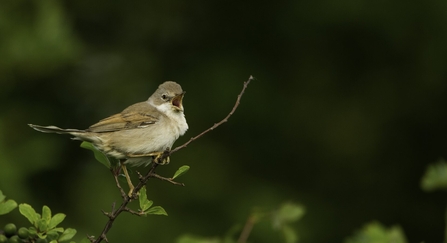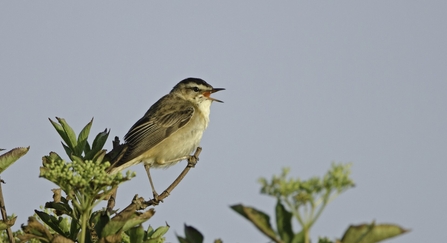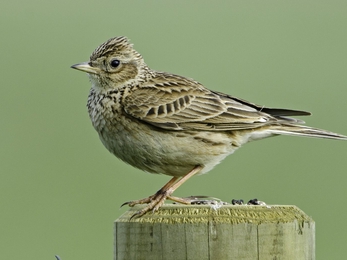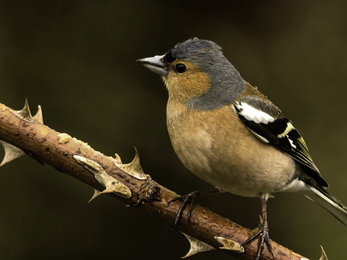Our gardens are filled with bird song, and every wood rings with the sound of resident birds and newly arrived migrants, telling us spring is truly sprung. It’s the start of the breeding season for the songsters, and song, though it might sound joyous to us, is all to do with the serious business of raising a family.
Bird Song Basics
Singing Wren (c) Stewart McDonald
Bird sound is divided into two sorts – calls and song. Calls are short and simple, serving as alarms or to keep flock members together all year long. Alarm calls are understood across species, so if a blackbird shouts ‘Cat!’, all the other birds in the garden get the message.

Whitethroat (c) Andrew Parkinson/2020VISION
Songs are species-specific, and tell other members of the same species that this territory is occupied and defended – a deterrent to other males, and a ‘come hither’ to females. Each song is different, so the right species of female is attracted and also to show the quality of the singer to both rivals and potential mates.
A long, loud song shows the bird is in good condition, with plenty of stamina. In some species a good repertoire is particularly attractive to the ladies, and many birds mimic other species or even totally non-avian sounds such as car alarms, weaving all these different sounds into their song.

Sedge Warbler (c) David Tipling/2020VISION
A sedge warbler, for example, never sings the same song twice. He uses all his memorised song fragments seemingly at random.
Learning song is important. Although every species seems to have an inbuilt song, young birds learn details from their fathers and from neighbouring males. These variations can build up over generations, forming regional dialects.
But how do they do it? Skylarks can sustain their song flight for up to an hour. A wren sings 740 notes per minute, a cock chaffinch can repeat his principal phrase as many as 3,000 times a day, and many birds can produce two different notes at the same time.
A human singer would be exhausted, even without flying at the same time! Birds aren’t limited to one voicebox and two lungs though. The windpipe is bifurcated -a syrinx, and birds have nine air sacs as well as lungs and hollow, air-filled bones. That means they can operate almost like a bagpipe, pushing air out of the sacs whilst breathing in. The lungs can exhale alternately, allowing the bird to harmonise with itself. While human vocal cords utilise a meagre 2% of the air passing over them, a syrinx can vibrate almost all of it.
So next time you’re enraptured by a fluting blackbird or a trilling lark, spare a minute to wonder at the evolution which allows it all to happen. Without its glory, what would a spring morning be?
Dr Cath Price
Shropshire Wildlife Trust


